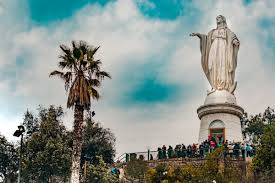How old is Santiago de Chile?

How old is Santiago de Chile?
How old is Santiago de Chile? Santiago is the capital of Chile, founded in 1541, making it over 480 years old today.
Santiago, the capital city of Chile, has a long and rich history that spans nearly five centuries.
The Foundation of Santiago
Santiago was founded by Spanish conquistador Pedro de Valdivia on February 12, 1541. Its establishment marked the beginning of a new chapter in Chile’s colonial history and development.
Early Challenges and Development
The first years of Santiago’s existence were difficult. The city faced challenges such as attacks from indigenous groups and natural disasters. Despite these, it grew steadily over time.
Santiago’s Role in Chilean Independence
During the early 1800s, Santiago played a significant role in Chile’s independence movement. The city became a hub for revolutionary activity, particularly during the Chilean War of Independence.
Growth in the 19th Century
Throughout the 19th century, Santiago experienced rapid growth. It became the country’s political and economic center, driving the expansion of infrastructure and the development of new neighborhoods.
Modernization in the 20th Century
In the 20th century, Santiago saw rapid modernization. With industrialization, the city’s population grew, and new technologies improved transportation and living standards, transforming Santiago into a global city.
Earthquakes and Natural Disasters
Santiago’s history has been marked by natural disasters, particularly earthquakes. The city has endured several devastating earthquakes, but it has continually rebuilt itself, showcasing its resilience and adaptability.
Cultural Transformation Over Time
Santiago has evolved into a vibrant cultural hub. Over the centuries, its cultural identity has been shaped by indigenous traditions, Spanish colonial influence, and modern globalization, blending old and new.
The Role of Immigration
Immigration has played a crucial role in Santiago’s development. Waves of European immigrants, especially from Italy and Germany, helped shape the city’s economy, culture, and architectural landscape throughout its history.
Santiago Today: A Modern Capital
Today, Santiago is a bustling, modern metropolis. Its history of growth and resilience is reflected in the city’s architecture, cultural diversity, and status as Chile’s economic and political center.
Santiago’s Role in Latin America
Santiago is not only Chile’s capital but also a key player in Latin American politics and economics. As the headquarters for several multinational companies, it plays a major role in the region’s development.
Santiago’s Historical Neighborhoods
Some neighborhoods in Santiago, like Barrio Lastarria and Bellavista, have historical significance and showcase the city’s colonial architecture. These areas are a reminder of the city’s rich past and evolving identity.
The Evolution of Santiago’s Architecture
From its colonial beginnings to modern skyscrapers, Santiago’s architecture reflects its long history. The city’s urban landscape blends old churches, colonial-era buildings, and contemporary structures, offering a visual timeline.
Santiago During the 1973 Military Coup
The 1973 military coup was a pivotal moment in Santiago’s history. The city witnessed significant political upheaval, which shaped the nation’s future. This event still influences Chile’s political landscape today.
Santiago’s Expanding Infrastructure
As Santiago has aged, it has continuously improved its infrastructure. The expansion of the Metro system and highways has been key in facilitating growth, making transportation more accessible for its residents.
Santiago’s Cultural Heritage
Santiago’s deep cultural roots are reflected in its museums, festivals, and public spaces. These institutions preserve the city’s history, offering visitors a glimpse into Santiago’s transformation over the centuries.
Santiago and Its Connection to the Andes
The presence of the Andes Mountains has influenced Santiago throughout its history. The mountains not only shape the city’s climate but have also played a part in its development and daily life.
Santiago’s Changing Economy
Santiago’s economy has shifted over time, from agriculture and mining to finance and technology. This transformation mirrors the city’s growth and its increasing influence in Chile and beyond.
Santiago’s Population Growth
Over the years, Santiago’s population has steadily increased. Originally a small settlement, it is now home to over seven million people, making it one of the largest cities in South America.
Santiago as a Cultural Bridge
Santiago has become a cultural bridge between Chile and the rest of the world. With its international connections, it has become a hub for tourism, business, and culture, attracting visitors from across the globe.



Leave a Reply